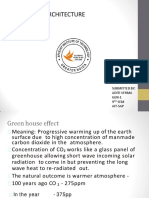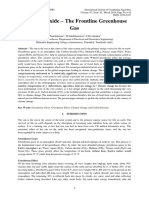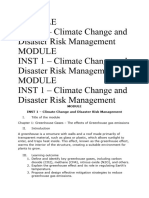0% found this document useful (0 votes)
115 views10 pagesPhysics Assignment
Thermodynamics provides fundamental principles for understanding climate change. It governs heat transfer and the behavior of gases, which are essential components of the climate process. Through the greenhouse effect, certain gases trap heat in the atmosphere, contributing to global warming. Thermodynamic principles also underpin climate models used to predict future climate conditions and assess human impacts.
Uploaded by
shawanashimu09Copyright
© © All Rights Reserved
We take content rights seriously. If you suspect this is your content, claim it here.
Available Formats
Download as PDF, TXT or read online on Scribd
0% found this document useful (0 votes)
115 views10 pagesPhysics Assignment
Thermodynamics provides fundamental principles for understanding climate change. It governs heat transfer and the behavior of gases, which are essential components of the climate process. Through the greenhouse effect, certain gases trap heat in the atmosphere, contributing to global warming. Thermodynamic principles also underpin climate models used to predict future climate conditions and assess human impacts.
Uploaded by
shawanashimu09Copyright
© © All Rights Reserved
We take content rights seriously. If you suspect this is your content, claim it here.
Available Formats
Download as PDF, TXT or read online on Scribd
/ 10






















































































